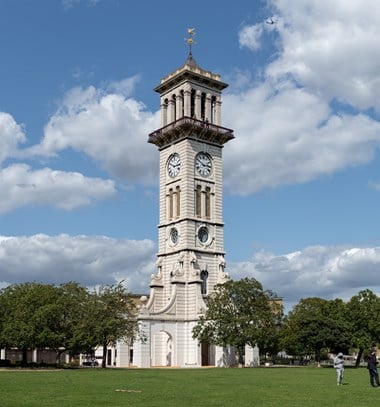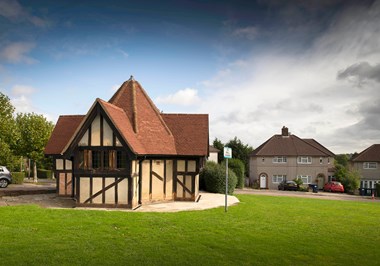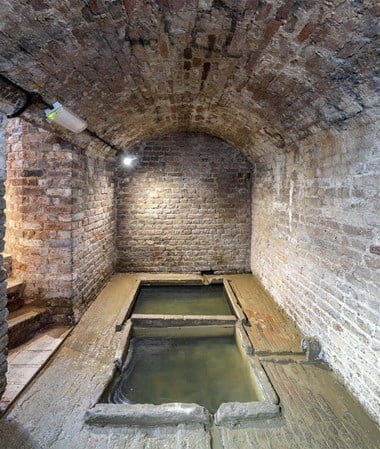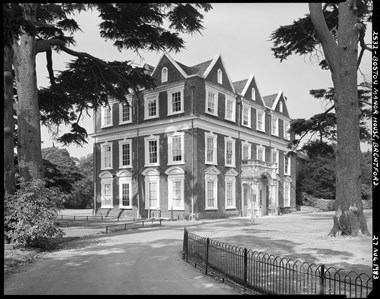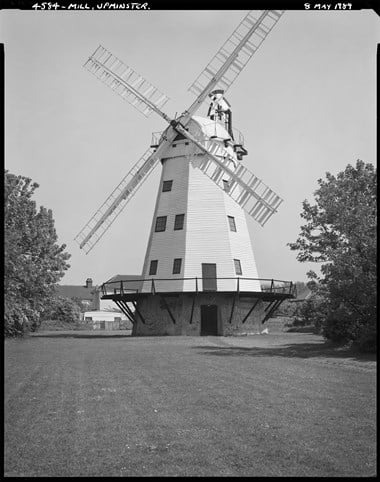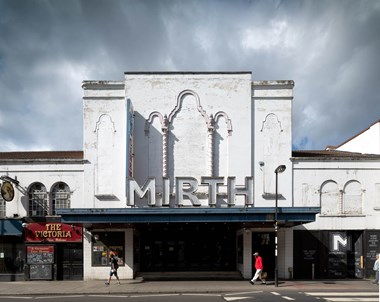Find Heritage at Risk on an interactive map. Move around the map to see what's at risk in your area or use the address search.
Heritage at Risk in London
On Thursday 17 October we published the 2019 Heritage at Risk Register for London, the annual snapshot of the health of the capital’s historic places.
Over the last year 36 historic buildings and sites have been saved. Imaginative uses have been found for empty buildings, providing new visitor attractions and cultural venues for people to enjoy.
Monuments in central London and the suburbs have been cared for, and have been brought back to life.
Communities, working with funders and local authorities, have saved valued historic places for future generations.
Highlights from the sites rescued in 2019
Please click on the gallery images to enlarge.
Saved: The Clock Tower, Caledonian Park
The Caledonian Clock Tower, built in 1855, has been restored with funding from the National Lottery Heritage Fund and Islington Borough Council. It is now open to the public along with a heritage centre and café.
Designed by the Victorian architect, John Bunstone Bunning, the 151-foot tower was the centre piece of a new 75-acre livestock market developed by the City of London. The Grade II* listed tower was damaged by a bomb during an air raid in 1940 and the clock was not started again until 1953. The market closed in 1961 and part of the site was laid out as a public park, which opened in 1970.
Saved: Physic Well, Barnet
The timber-framed well house, which dates to 1937, had been on the Register for more than two decades when a project to restore it was launched by Heritage of London Trust, Historic England, Barnet Council and Barnet Museum. The work included repairs to the roof, timber work and windows, and the public can now visit this historic landmark.
The well has a brick-lined vault which dates back to the 17th century and was visited by Londoners for the medicinal waters.
Highlights from the sites added to the Register in 2019
Added: Church of St Saviour’s, Eltham
This vast church of purple brick and concrete roofs was built in 1932. It is the work of the English architect Nugent Francis Cachemaille-Day (1896–1976) who was awarded the 1933 RIBA Gold medal for the design of this church, and devised some of the most revolutionary 20th-century churches in the country. The church has been added to the Register because of rainwater damage, problems with the roof and deteriorating windows to the Lady Chapel. The church is seeking funding for emergency repairs and health and safety works.
Added: The Ha-Ha Wall, Bromley Palace Park
The Ha-Ha Wall is situated in the grounds of the former Bishop of Rochester's Palace in Bromley. The medieval palace was demolished and replaced by a classical building in 1776. The Ha-Ha Wall, built in the late-18th century, is hidden away below the lake and protected the Palace parklands from grazing sheep and cattle without spoiling the view with a fence.
Highlights from the sites where good progress is being made
Please click on the gallery images to enlarge.
Good progress: EMD/Granada Cinema, Walthamstow
This iconic Art Deco venue, which has been on the Register since 2003, once hosted artists including The Beatles, Rolling Stones, The Who, James Brown and Johnny Cash. This year Waltham Forest Council, London Borough of Culture 2019, announced a £17 million restoration project of the site, which will be undertaken in partnership with Soho Theatre. When the restoration is complete the venue will host some of the biggest names in contemporary comedy, plus theatre, performance, music, pantomime and community and education programmes. The renovation is expected to start in May 2020 and it is estimated that it will take around three years to complete.
Good progress: Upminster Windmill
More than 200 years old, Upminster Windmill was built by James Nokes, a local farmer, from 1803-05. Grade II* listed, it is considered to be amongst the very best remaining English smock mills. The site once comprised 16 buildings including the windmill, a steam mill, a large mill house and two cottages. The milling business closed in 1935 and the site was purchased by Essex County Council in 1940, whose plan was to demolish the buildings and develop the site for housing. A public outcry stopped the demolition.
Today the mill is run by volunteers, the Friends of Upminster Windmill, who began a major restoration project in 2015, including building a visitor centre. The work is nearing completion, with the aim of reopening the working mill to the public in April 2020.
Heritage at Risk in brief
Across the capital 36 sites have been removed from the Register because their future has been secured, often by community intervention, while 26 sites have been added to the Register because of concerns about their condition including 11 places of worship.
The Heritage at Risk Register 2019 reveals that in London 443 listed buildings and monuments, 27 archaeological sites, 93 places of worship, 11 registered parks and gardens and 74 conservation areas are at risk of neglect, decay or inappropriate change.
There are 648 assets on the Register in London, 12 fewer than in 2018.



